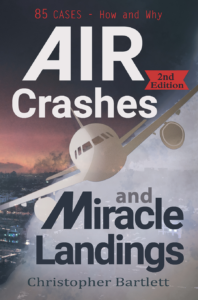In Air Crashes and Miracle Landings we only just touched on the case of the French air traffic controllers after mentioning an extract on the Internet dated Thursday, January 31, 1980 saying:
“FAA Acts to Remove a Controller”
The Federal Aviation Administration moved yesterday to dismiss an air traffic controller for allegedly tampering with radar data and contributing to the “potential endangerment” of a Soviet airliner being guided to a landing at Kennedy International Airport last January.
The announcement of the FAA action said that “important flight data” on the Soviet plane, a four-jet Ilyushin 62 operated by the airline Aeroflot, had been “deliberately erased” as the aircraft approached Kennedy. Among those on board the plane was the Soviet ambassador to the United States, Anatoly F. Dobrynin.
In pointing out how pivotal to aviation the controllers are and the power they wield, we cited the 1981 industrial action by US air traffic controllers and the book Collision Course by Prof. Joseph McCartin on the origins of the strike and the aftermath, which led to President Reagan firing eleven thousand controllers.
There were no major accidents while new controllers were engaged and trained following the sacking, though some pro-union people say the crash of Air Florida Flight 90 into the icy Potomac River in January 1982 can be partly attributed to the use of a less qualified controller.
Standing up to air traffic controllers is difficult. The French ones were and are notorious, with the country’s location meaning they can cause wide and costly disruption.
As far back as 1973 an exasperated French government had military personnel take over, but the attempt to defeat the controllers was short-lived, for that very day there was a midair collision at Nantes, near the Atlantic coast, between aircraft of two Spanish airlines.
The controllers’ union mocked the government, saying it proved that they, as they had always claimed, were indispensable.
An article on AirlineGeeks dated March 23, 2018 entitled French Air Traffic Control Goes on Strike…Again highlights iteresting poing points such as:
Since 2010, air traffic control (ATC) strikes have cost the Eurozone economy nearly 12 billion euros and passengers have faced nearly an entire year’s work of ATC strikes since 2005. Of the 357 ATC strikes since then, 249 were French ATC strikes.
There have been suggestions that other countries’ controllers be allowed to handle overflights during strikes, but moves to introduce that would lead to further strikes–as was the case when attempts were made to rationalise the handling of Eurozone air traffic.
One problem is that with the French controllers being civil servants the government has some measure of control over them in that that must provide a minimum service. A different regime, say forcing them to declare beforehand how many will be striking–at present flights can be cancelled in anticipation of a strike with them finally turning up–might mean less control than with them being civil servants. The problem seems insoluble and for the time-being President Macron has to deal with the striking railwaymen in support of whom the air traffic controllers came out on strike!

[If several posts are displayed click on heading for specific view]



